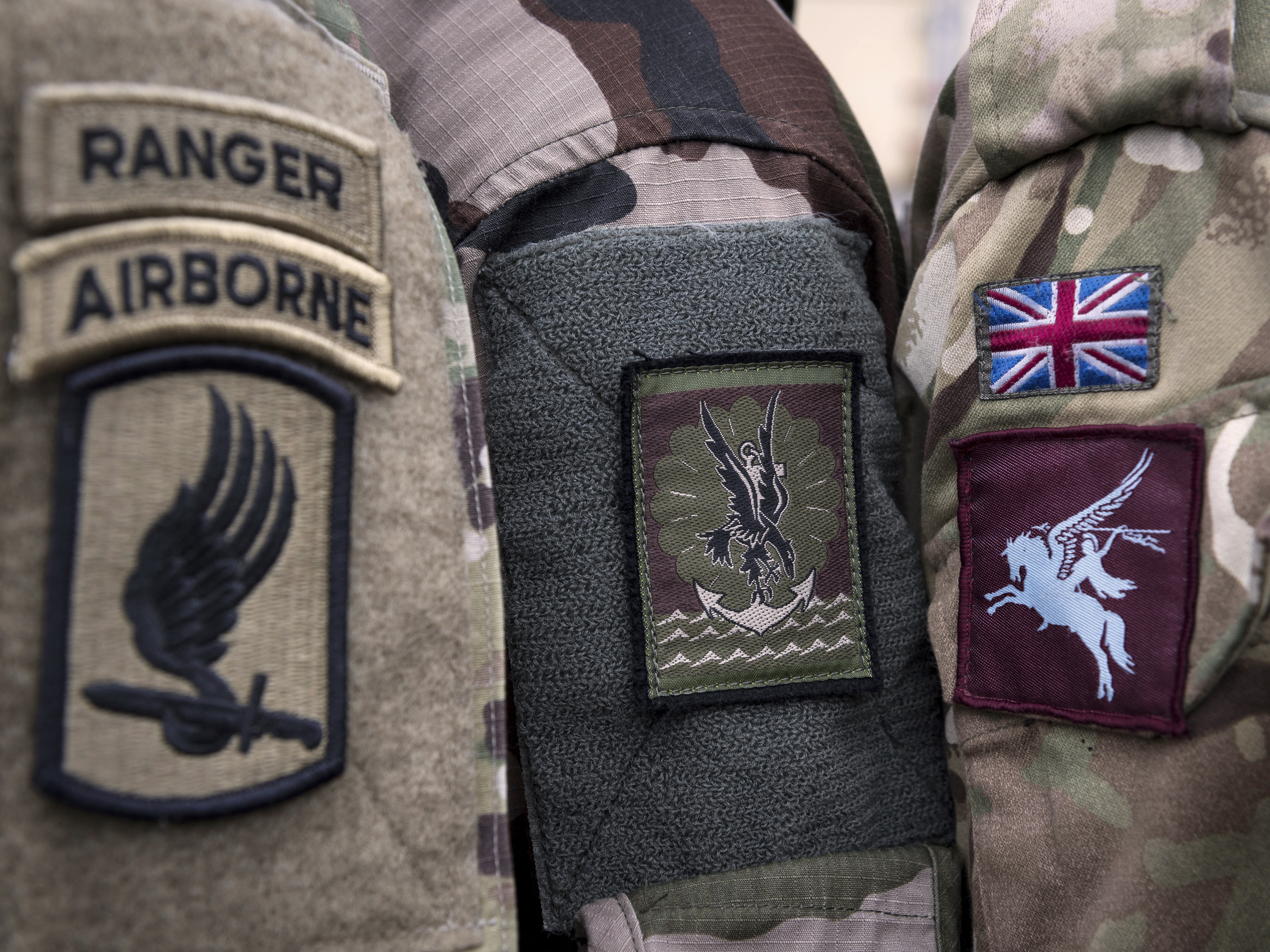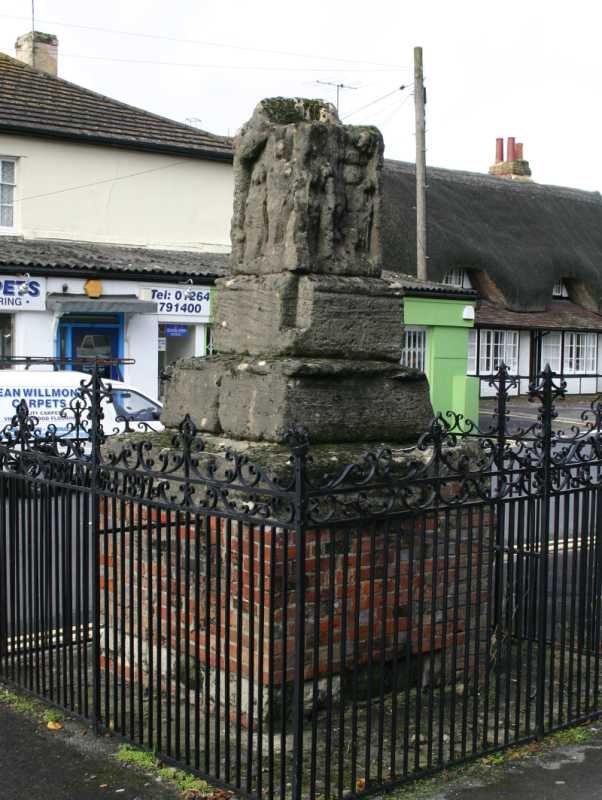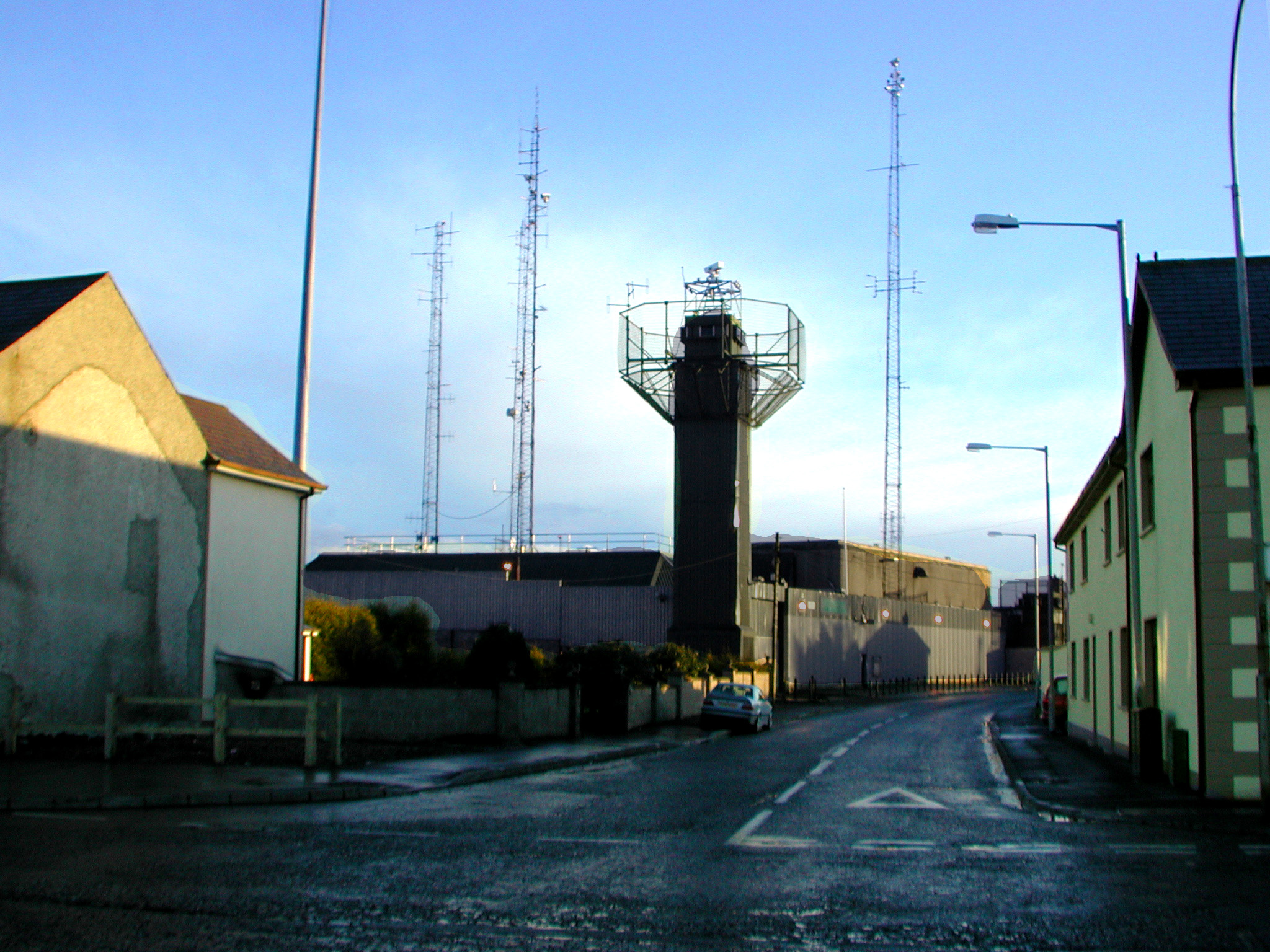|
26 Engineer Regiment (United Kingdom)
26 Engineer Regiment is a regiment of the British Army's Royal Engineers. It is based at Swinton Barracks, Salisbury Plain, Wiltshire. History The unit was formed in 1950 and in April 1956 moved to 4th Armoured Division in the same role. In November 1957, the regiment was reorganised and re-titled as "Headquarters Royal Engineers, 4th Division" and moved to Paderborn, Germany. By 1969, it was expanded in size and in 1970, the regiment moved to Iserlohn. From July to November 1974, the regiment was tasked as an infantry unit and served in Northern Ireland. By 1978, the regiment was reorganised again as the new 3rd Armoured Division's Armoured Engineer Regiment. The Regiment reformed in 2000 with 38 HQ and Support Squadron and 8 Armd Engr Sqn and from August to February of the same year the regiment served as part of Kosovo Force. When the regiment came back from operations it moved to Horne Barracks, Larkhill, but later moved to Corunna Barracks Ludgershall. The regiment se ... [...More Info...] [...Related Items...] OR: [Wikipedia] [Google] [Baidu] |
Regiment
A regiment is a military unit. Its role and size varies markedly, depending on the country, service and/or a specialisation. In Medieval Europe, the term "regiment" denoted any large body of front-line soldiers, recruited or conscripted in one geographical area, by a leader who was often also the feudal lord ''in capite'' of the soldiers. Lesser barons of knightly rank could be expected to muster or hire a company or battalion from their manorial estate. By the end of the 17th century, infantry regiments in most European armies were permanent units, with approximately 800 men and commanded by a colonel. Definitions During the modern era, the word "regiment" – much like "corps" – may have two somewhat divergent meanings, which refer to two distinct roles: # a front-line military formation; or # an administrative or ceremonial unit. In many armies, the first role has been assumed by independent battalions, battlegroups, task forces, brigades and other, similarly s ... [...More Info...] [...Related Items...] OR: [Wikipedia] [Google] [Baidu] |
3rd Armoured Division (United Kingdom)
The 3rd (United Kingdom) Division is a regular army division of the British Army. It was created in 1809 by Arthur Wellesley, 1st Duke of Wellington, as part of the Anglo-Portuguese Army, for service in the Peninsular War, and was known as the Fighting 3rd under Sir Thomas Picton during the Napoleonic Wars. The division fought at the Battle of Waterloo, as well as during the Crimean War and the Second Boer War. As a result of bitter fighting in 1916, during the First World War, the division became referred to as the 3rd (Iron) Division, or the Iron Division or Ironsides. During the Second World War, the division (now known as the 3rd Infantry Division) fought in the Battle of France including a rearguard action during the Dunkirk Evacuation, and played a prominent role in the D-Day landings of 6 June 1944. The division was to have been part of a proposed Commonwealth Corps, formed for a planned invasion of Japan in 1945–46, and later served in the British Mandate of Palestin ... [...More Info...] [...Related Items...] OR: [Wikipedia] [Google] [Baidu] |
Army 2020
Army 2020, was the name given to the restructuring of the British Army, in light of the 2010 Strategic Defence and Security Review. Background The British Government gave an indication of its proposals for the future structure of the Army in early 2008, in a press report stating that it was considering restructuring the Army into a force of three deployable divisional headquarters and eight 'homogenous or identical' brigades, each with a spread of heavy, medium and light capabilities. This report indicated that the existing 16 Air Assault Brigade would be retained as a high-readiness rapid reaction force. Subsequently, it was reported that the former Chief of the General Staff, General Sir Richard Dannatt, wanted to see the Army structured so as to extend the interval between operational tours from two to two-and-a-half years. In 2010, the Strategic Defence and Security Review was published. As part of the plans, the British Army will be reduced by 23 regular units, and by 20 ... [...More Info...] [...Related Items...] OR: [Wikipedia] [Google] [Baidu] |
Perham Down
Perham Down is a village in Wiltshire, England, in Tidworth parish on the eastern edge of Salisbury Plain. It lies on a minor road about east of the town of Tidworth and southwest of the town of Ludgershall. The county border with Hampshire is nearby and the nearest large town is Andover, Hampshire, about to the southeast. The main feature of the village is Perham Down Camp which was rebuilt between 1972 and 1974 and renamed Swinton Barracks at that time. On Lamb Down to the south of the village is a linear earthwork, possibly a prehistoric boundary marker; it may have extended further north but that section would have been destroyed when the barracks were built. For elections to Wiltshire Council, Perham Down falls within Ludgershall and Perham Down electoral division, electing one councillor. Boundary changes in 2020, effective from the 2021 election, place Perham within the Tidworth East & Ludgershall South division. References External links Villages in Wiltshire ... [...More Info...] [...Related Items...] OR: [Wikipedia] [Google] [Baidu] |
Operation Herrick
Operation Herrick was the codename under which all British operations in the War in Afghanistan were conducted from 2002 to the end of combat operations in 2014. It consisted of the British contribution to the NATO-led International Security Assistance Force (ISAF), and support to the American-led Operation Enduring Freedom (OEF), within the central Asian country. Operation Herrick superseded two previous efforts in Afghanistan. The first of these was Operation Veritas, which consisted of support during the United States invasion of Afghanistan in October 2001. The last major action of this was a sweep in east Afghanistan by 1,700 Royal Marines during Operation Jacana, which ended in mid-2002. The second was Operation Fingal, which involved leadership and a 2,000 strong contribution for a newly formed ISAF in Kabul after December 2001. Command was subsequently transferred to NATO ally Turkey several months later and the British contingent was scaled back to 300. Since then, all com ... [...More Info...] [...Related Items...] OR: [Wikipedia] [Google] [Baidu] |
Operation Telic
Operation Telic (Op TELIC) was the codename under which all of the United Kingdom's military operations in Iraq were conducted between the start of the invasion of Iraq on 19 March 2003 and the withdrawal of the last remaining British forces on 22 May 2011. The bulk of the mission ended on 30 April 2009 but around 150 troops, mainly from the Royal Navy, remained in Iraq until 22 May 2011 as part of the Iraqi Training and Advisory Mission. 46,000 troops were deployed at the onset of the invasion and the total cost of war stood at £9.24 billion in 2010. Background Operation Telic was one of the largest deployments of British forces since World War II. It was only approached in size by the 1991 Operation Granby deployment for the Gulf War and the 1956 Operation Musketeer Suez Crisis deployment. It was considerably larger than the 1982 Operation Corporate in the Falklands War, which saw around 30,000 personnel deployed and the Korean War, which saw fewer than 20,000 personnel deplo ... [...More Info...] [...Related Items...] OR: [Wikipedia] [Google] [Baidu] |
Ludgershall, Wiltshire
Ludgershall ( , with a hard g) is a town and civil parish north east of Salisbury, Wiltshire, England. It is on the A342 road between Devizes and Andover. The parish includes Faberstown which is contiguous with Ludgershall, and the hamlet of Biddesden which is to the east on the border with Hampshire. History There is evidence of settlement in the late Bronze Age or early Iron Age at Windmill Down on the western edge of the parish. The ''Domesday Book'' of 1086 recorded small settlements at Ludgershall and Biddesden. The entry for ''Litlegarsele'' reads: " Edward of Salisbury holds Ludgershall. Alfward held it before 1066; it paid tax for one hide (about 24 acres). Land for 3 ploughs. In Lordship 2 ploughs, 3 slaves; 8 Cottagers with 1 plough. Pasture 3 furlongs long and 1 furlong wide; woodland ½ league long and 2 furlongs wide." The value was 100 shillings. The name "Litlegarsele" may come from "lytel", small and "garsheath", a grassy place, thus a "small grazing area" or ... [...More Info...] [...Related Items...] OR: [Wikipedia] [Google] [Baidu] |
Kosovo Force
The Kosovo Force (KFOR) is a North Atlantic Treaty Organization, NATO-led international NATO peacekeeping, peacekeeping force in Kosovo. Its operations are gradually reducing until Kosovo Security Force, Kosovo's Security Force, established in 2009, becomes self sufficient. KFOR entered Kosovo on 11 June 1999, two days after the adoption of UN Security Council Resolution 1244. At the time, Kosovo was facing a grave humanitarian crisis, with Military of Serbia and Montenegro, military forces from Serbia and Montenegro, Yugoslavia in action against the Kosovo Liberation Army (KLA) in daily engagements. Nearly one million people had fled Kosovo as refugees by that time, and many did not permanently return. KFOR is gradually transferring responsibilities to the Kosovo Police and other local authorities. Currently, 28 states contribute to the KFOR, with a combined strength of approximately 4,000 military and civilian personnel. The mission was initially called Operation Joint Guardi ... [...More Info...] [...Related Items...] OR: [Wikipedia] [Google] [Baidu] |
Operation Banner
Operation Banner was the operational name for the British Armed Forces' operation in Northern Ireland from 1969 to 2007, as part of the Troubles. It was the longest continuous deployment in British military history. The British Army was initially deployed, at the request of the unionist government of Northern Ireland, in response to the August 1969 riots. Its role was to support the Royal Ulster Constabulary (RUC) and to assert the authority of the British government in Northern Ireland. This involved counter-insurgency and supporting the police in carrying out internal security duties such as guarding key points, mounting checkpoints and patrols, carrying out raids and searches, riot control and bomb disposal. More than 300,000 soldiers served in Operation Banner. At the peak of the operation in the 1970s, about 21,000 British troops were deployed, most of them from Great Britain. As part of the operation, a new locally-recruited regiment was also formed: the Ulster Defenc ... [...More Info...] [...Related Items...] OR: [Wikipedia] [Google] [Baidu] |
Royal Engineers
The Corps of Royal Engineers, usually called the Royal Engineers (RE), and commonly known as the ''Sappers'', is a corps of the British Army. It provides military engineering and other technical support to the British Armed Forces and is headed by the Chief Royal Engineer. The Regimental Headquarters and the Royal School of Military Engineering are in Chatham in Kent, England. The corps is divided into several regiments, barracked at various places in the United Kingdom and around the world. History The Royal Engineers trace their origins back to the military engineers brought to England by William the Conqueror, specifically Bishop Gundulf of Rochester Cathedral, and claim over 900 years of unbroken service to the crown. Engineers have always served in the armies of the Crown; however, the origins of the modern corps, along with those of the Royal Artillery, lie in the Board of Ordnance established in the 15th century. In Woolwich in 1716, the Board formed the Royal Regime ... [...More Info...] [...Related Items...] OR: [Wikipedia] [Google] [Baidu] |
Iserlohn
Iserlohn (; Westphalian: ''Iserlaun'') is a city in the Märkischer Kreis district, in North Rhine-Westphalia, Germany. It is the largest city by population and area within the district and the Sauerland region. Geography Iserlohn is located at the north end of the Sauerland near the Ruhr river, in West-Central Germany. History The Pancratius church (also called Bauernkirche) is believed to have been founded in around 985, but the first written document mentioning ''lon'' dates only from 1150. In 1237 the Count of the Mark gave Iserlohn municipal rights. In 1975 the city, which had been an urban district before, incorporated the surrounding ex-municipalities of Letmathe, Hennen, Sümmern and Kesbern, and became part of the district "Märkischer Kreis". As a larger mid-sized city, Iserlohn, however, still has a special status compared to most other municipalities in the district. This means that the city takes on tasks more usually performed by the district, such as social a ... [...More Info...] [...Related Items...] OR: [Wikipedia] [Google] [Baidu] |
Paderborn
Paderborn (; Westphalian: ''Patterbuorn'', also ''Paterboärn'') is a city in eastern North Rhine-Westphalia, Germany, capital of the Paderborn district. The name of the city derives from the river Pader and ''Born'', an old German term for the source of a river. The river Pader originates in more than 200 springs near Paderborn Cathedral, where St. Liborius is buried. Paderborn ranks 55th on the List of cities in Germany by population. History Paderborn was founded as a bishopric by Charlemagne in 795, although its official history began in 777 when Charlemagne built a castle near the Pader springs.Ed. Heribert Zelder, Tourist Information Services, ''Welcome to Paderborn'', Stadt Paderborn: Paderborn, Germany, 2009. In 799 Pope Leo III fled his enemies in Rome and reached Paderborn, where he met Charlemagne, and stayed there for three months. It was during this time that it was decided that Charlemagne would be crowned emperor. Charlemagne reinstated Leo in Rome in 800 ... [...More Info...] [...Related Items...] OR: [Wikipedia] [Google] [Baidu] |






